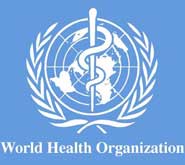The guideline development group was chaired by Professor Gene Feder from the University's School of Social and Community Medicine.
Professor Feder said: “These are the first international evidence-based guidelines on intimate partner and sexual violence. Health services have an important role in responding to these major public health and clinical problems, as part of a coordinated community response. Our guidelines are designed to inform national health care policies in resource poor and resource rich countries.”
The report, Global and regional estimates of violence against women: Prevalence and health effects of intimate partner violence and non-partner sexual violence, represents the first systematic study of global data on the prevalence of violence against women – both by partners and non-partners. Some 35 per cent of all women will experience either intimate partner or non-partner violence. The study finds that intimate partner violence is the most common type of violence against women, affecting 30 per cent of women worldwide.
The report details the impact of violence on the physical and mental health of women and girls. This can range from broken bones to pregnancy-related complications, mental problems and impaired social functioning.
“These findings send a powerful message that violence against women is a global health problem of epidemic proportions,” said Dr Margaret Chan, Director-General, WHO. “We also see that the world’s health systems can and must do more for women who experience violence.”
The report’s key findings on the health impacts of violence by an intimate partner were:
- Death and injury - the study found that globally, 38 per cent of all women who were murdered were murdered by their intimate partners, and 42 per cent of women who have experienced physical or sexual violence at the hands of a partner had experienced injuries as a result.
- Depression - partner violence is a major contributor to women’s mental health problems, with women who have experienced partner violence being almost twice as likely to experience depression compared to women who have not experienced any violence.
- Alcohol use problems – women experiencing intimate partner violence are almost twice as likely as other women to have alcohol-use problems.
- Sexually transmitted infections – women who experience physical and/or sexual partner violence are 1.5 times more likely to acquire syphilis infection, chlamydia, or gonorrhoea. In some regions (including sub-Saharan Africa), they are 1.5 times more likely to acquire HIV.
- Unwanted pregnancy and abortion – both partner violence and non-partner sexual violence are associated with unwanted pregnancy; the report found that women experiencing physical and/or sexual partner violence are twice as likely to have an abortion than women who do not experience this violence
- Low birth-weight babies – women who experience partner violence have a 16 per cent greater chance of having a low birth-weight baby.
Need for better reporting and more attention to prevention
Fear of stigma prevents many women from reporting non-partner sexual violence. Other barriers to data collection include the fact that fewer countries collect this data than information about intimate partner violence, and that many surveys of this type of violence employ less sophisticated measurement approaches than those used in monitoring intimate partner violence.
In spite of these obstacles, the review found that 7.2 per cent of women globally had reported non-partner sexual violence. As a result of this violence, they were 2.3 times more likely to have alcohol disorders and 2.6 times more likely to suffer depression or anxiety – slightly more than women experiencing intimate partner violence.
The report calls for a major scaling up of global efforts to prevent all kinds of violence against women by addressing the social and cultural factors behind it.
Guideline recommendations to the health sector
The report emphasizes the urgent need for better care for women who have experienced violence. These women often seek health-care, without necessarily disclosing the cause of their injuries or ill-health.
“The report findings show that violence greatly increases women’s vulnerability to a range of short and long-term health problems; it highlights the need for the health sector to take violence against women more seriously,” said Dr Claudia Garcia-Moreno of WHO. “In many cases this is because health workers simply do not know how to respond.”
New WHO clinical and policy guidelines released today aim to address this lack of knowledge. They stress the importance of training all levels of health workers to recognize when women may be at risk of partner violence and to know how to provide an appropriate response.
They also point out that some healthcare settings, such as ante-natal services and HIV testing, may provide opportunities to support survivors of violence, provided certain minimum requirements are met:
- Health providers have been trained how to ask about violence;
- Standard operating procedures are in place;
- Consultation takes place in a private setting;
- Confidentiality is guaranteed;
- A referral system is in place to ensure that women can access related services;
- In the case of sexual assault, health care settings must be equipped to provide the comprehensive response women need – to address both physical and mental health consequences.
The report’s authors stress the importance of using these guidelines to incorporate issues of violence into the medical and nursing curricula as well as during in-service training.
